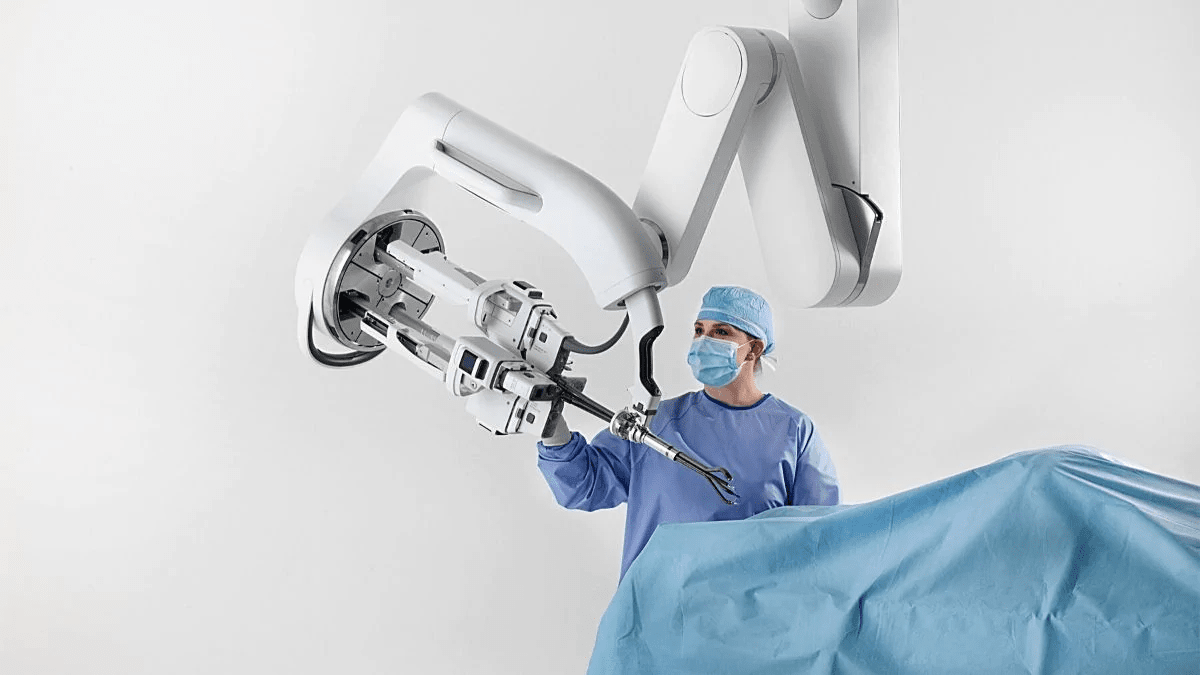Robotic Surgery for Prostate Cancer, Kidney Tumor and Ureteric, Bladder Cancer in Indiar
Robotic surgery is an advanced surgical technique that uses robotic technology to perform minimally invasive surgeries with more precision and accuracy than traditional open surgeries. In India, there are many hospitals and medical centers that offer robotic surgery for prostate cancer, kidney tumors, ureteric, and bladder cancer.
Robotic surgery for prostate cancer involves removing the prostate gland and surrounding tissue using a robotic system, which offers better precision and less blood loss compared to traditional open surgery. This procedure is known as robotic prostatectomy.
For kidney tumors, robotic surgery involves removing the tumor or the entire kidney using a robotic system, which offers a faster recovery time and less scarring compared to traditional open surgery. This procedure is known as robotic nephrectomy.
For ureteric and bladder cancer, robotic surgery involves removing the affected part of the ureter or bladder using a robotic system, which offers a better outcome with minimal blood loss and a faster recovery time compared to traditional open surgery
Robotic surgery is a type of minimally invasive surgery. “Minimally invasive” means that instead of operating on patients through large incisions, we use miniaturized surgical instruments that fit through a series of quarter-inch incisions. When performing surgery with the da Vinci Si—the world’s most advanced surgical robot—these miniaturized instruments are mounted on three separate robotic arms, allowing the surgeon maximum range of motion and precision. The da Vinci’s fourth arm contains a magnified high-definition 3-D camera that guides the surgeon during the procedure.
In prostate cancer treatment, millimeters matter. Nerve fibers and blood vessels are attached to the prostate gland. To spare these nerves, they must be delicately and precisely separated from the prostate before its removal. Surgeons use the precision, vision and control provided by da Vinci to assist them in removal of the cancerous prostate while preserving important nerves and blood vessels. In terms of cancer control da Vinci Prostatectomy has shown equal or lower rates of positive surgical margins i.e. meaning margins with cancer cells left behind. Other great concerns for prostate cancer patients: urinary continence and sexual function after treatment. Studies show patients who undergo a da Vinci Prostatectomy may experience a faster return of urinary continence following surgery and a lower rate of urinary pain than radiation (brachytherapy) patients. Several studies also show that patients who are potent prior to surgery have experienced a high level of recovery of sexual function (defined as an erection for intercourse) within a year following da Vinci Surgery.
Benefits Of Robotic Surgery

Robotic surgery is a type of minimally invasive surgery that uses robotic technology to perform surgical procedures. Here are some of the benefits of robotic surgery:
- Less Invasive: Robotic surgery is less invasive than traditional open surgery. This means that the incisions made during the surgery are smaller, which leads to less scarring and a faster recovery time.
-
Precision and Accuracy: Robotic surgery offers greater precision and accuracy than traditional surgery. The robotic arms can be controlled with greater precision, which means that surgeons can perform more complex surgeries with better outcomes.
-
Reduced Blood Loss: Robotic surgery is associated with less blood loss than traditional open surgery. This means that patients may require fewer blood transfusions during and after surgery.
-
Shorter Hospital Stays: Patients who undergo robotic surgery typically have shorter hospital stays compared to traditional open surgery. This means that patients can return to their normal activities faster.
-
Lower Risk of Complications: Robotic surgery is associated with a lower risk of complications compared to traditional open surgery. This includes a lower risk of infection, blood clots, and other post-surgical complications.
-
Faster Recovery Time: Because robotic surgery is less invasive and associated with less blood loss and lower risk of complications, patients typically have a faster recovery time compared to traditional open surgery.
The da Vinci Camera: Standard laparoscopic surgery utilizes one single camera and limits the surgeon’s vision to 2-D view similar to watching a television. The da Vinci camera consists of TWO high resolutionfibreoptic cameras. They produce a true 3-D color picture to the surgeon sitting on the master console.
The da Vinci Surgical Instruments : Although they look a bit similar to standard laparoscopic instruments the robotic instruments have additional advantage of being articulated. This allows the instruments to open, close and fully turn and twist mimicking the movement of human wrist and fingers. This enables the robotic instruments to have 7 degree of freedom compared to only two degree of freedom in standard laparoscopic instruments.
Minimal Blood Loss with Robotic Surgery :The enhanced 3-D vision and advanced robotic instruments enable the surgeon to see even small blood vessels and control them even in areas which are not easily accessible with standard laparoscopy.
Urological Procedures performed by Robotic Surgery
- Robotic Radical Prostatectomy – for prostate cancer
- Robotic partial Nephrectomy – kidney saving surgery for kidney cancer
- Robotic Radical nephrectomy – for large kidney cancers
- Robotic Donor Nephrectomy – for transplant
- Robotic Partial / Radical Cystectomy – for bladder cancer
- Robotic Pyeloplasty – for kidney obstruction (Hydronephrosis)
- Complex urinary Stone surgery
- Ureteric reimplantation
- Repair of Vesicovaginal fistula